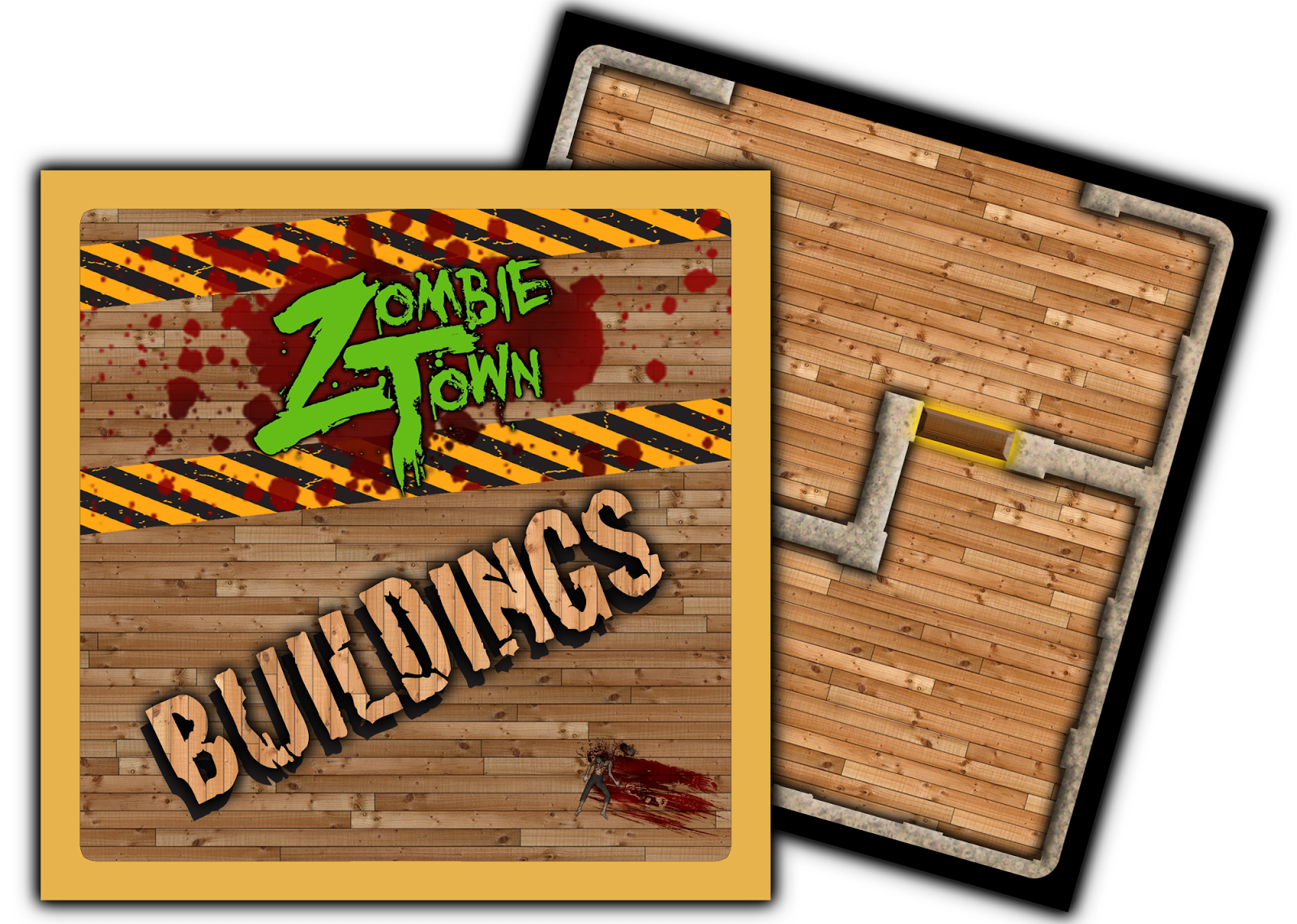Here's a sneak-peek at a side project of mine that I've been playing with for about six months. I've been playing with card board hand drawn tiles with friends and family up to this point, but I'm about ready to run my first batch of official cards. Once I do this I'll feel better about allowing others to play test, as they will not only get to comment on the game play, but the look and feel of the cards and tiles.
 Zombie Town is getting close to being ready, but my biggest problem has been maintaining focus on this, I keep coming up with more game ideas, that I seem to have to pursue enough to get a good idea about how the game would "feel", then I go back to Zombie Town for a little bit.
Zombie Town is getting close to being ready, but my biggest problem has been maintaining focus on this, I keep coming up with more game ideas, that I seem to have to pursue enough to get a good idea about how the game would "feel", then I go back to Zombie Town for a little bit.Essentially Zombie Town is a typical zombie apocalypse game, the survivors are attempting to accomplish an objective, but they don't know what it is until all the streets have been placed, only then do they finally draw the mission objective.
The map is constructed by alternately linking Crossroads with Streets, such that the tiles "fit" together. Then once the streets are gone an objective card is drawn, and the buildings can be explored. The objects range from finding particular items and reaching a specific tile, to fixing a vehicle, to fortifying a building, to last man standing, to first one to 50 kills, to each drawing there own objecting, and more.
 The end result is a game with very high replay-ability that you don't know what you really want for a map until you have your objective, but by then the map is already fixed, and they just have to explore the building. I'm thinking of an alternate style where the building can explored as well earlier, but they could not cause the map to grow in height or width, so essentially you would need to know where the roads were going before a building could be explored...little more complex to explain, so I'm leaning toward the other where of initial planning.
The end result is a game with very high replay-ability that you don't know what you really want for a map until you have your objective, but by then the map is already fixed, and they just have to explore the building. I'm thinking of an alternate style where the building can explored as well earlier, but they could not cause the map to grow in height or width, so essentially you would need to know where the roads were going before a building could be explored...little more complex to explain, so I'm leaning toward the other where of initial planning.The difficulty mechanism is determined by the over all activity level. It's assumed there are infinite zombies, but only those near the activity are initially drawn to the area of the survivors. The activity level increases by one for every turn a survivor takes, and again at the end of each round based on the number of noise that was made by the survivors over all. The more the activity level increases the harder the game will get, as the main determining factor for what type of creature is encountered is based on the current activity level.

The enemies are collectively called "Zombies", but the actually type of creature encountered can be anything from a rat swarm or infected animal, to a shambler (slow moving once dead human) to various types of infected humans (faster moving still considered to be alive), to the Zombie-King (similar concept of a Rat-King) and then there's the Horde (a large mixture of various types of creatures gathered in an area).
The Streets and Crossroads really determine the map size and shape, the Building are where the majority of the items can be found. In the typical game the buildings cannot be explored until all the road cards have been explored. There are four more types of cards: Events (drawn by first player at the start of every Survivor phase), Items (drawn when a player removes a search token from a tile), Doors (drawn when a survivor attempts to enter a building), and the Building Propose (used to determine the type of building that was explored, or sometimes the current use of the building). These are in addition to the Objective deck that was previously mentioned.
The current thinking is to possibly release the "Basic" version with just the Streets, Crossroads, Objectives, Events and most items, to keep cost down and allow people to try it out cheaper, than have a "Buildings Expansion", that will add the Building Tiles, Doors and Building Propose, as well as more items...and possibly other cards.
The game can be scaled by adding more Street & Crossroad cards that must be exhausted before building can be searched, this can allow for more people to play or could be used to increase the difficulty. Or the opposite could be done as well, where less cards to be used to allow for less players or a solo version, or to increase the likely hood of winning. Guideline will be provided for recommended number of players for easy, difficult and hard-core games.
Crossroads or Intersection cards:
Street cards (join Crossroads together, and provide location of building doors)
Building cards show the interior of building and the interior layout and possible interior room exits (these exits are trumped by roads, in which case they become doors).



No comments:
Post a Comment